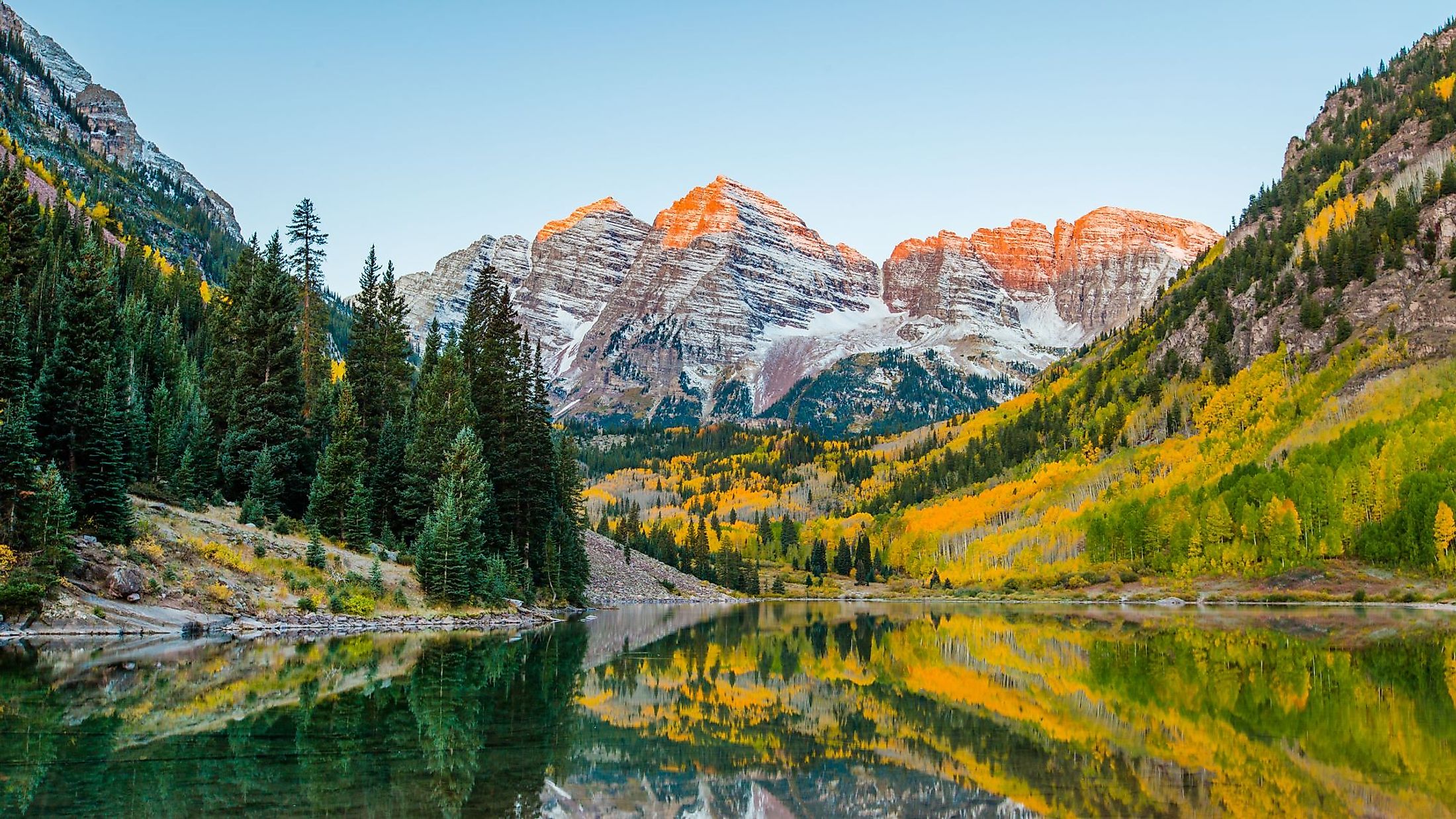
Maroon Bells, Colorado
The stunning Maroon Bells, a pair of 4,260-meter bell-shaped peaks southwest of Aspen, symbolize Colorado's alpine majesty. The image of the scarlet slopes of the Bells reflected in the quiet waters of Maroon Lake, particularly in the fall when the valley's dense groves of aspen trees glow golden yellow and the summits are covered with snow, is one of North America's most photographed landscapes.
Geology Of Maroon Bells
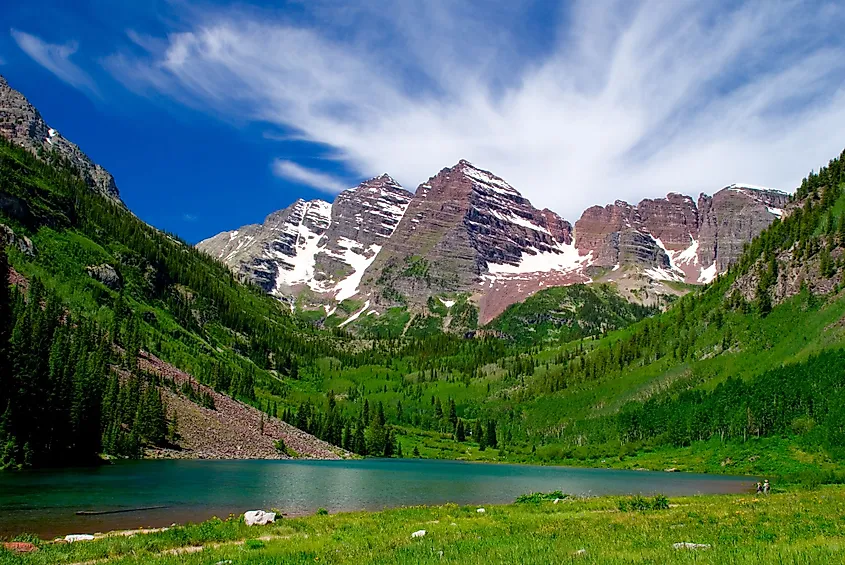
Between Aspen and Crested Butte, the Maroon Bells are tucked deep within the White River National Forest. The Bells, part of the larger Rocky Mountains that were formed millions of years ago by tectonic plate movement, are situated in the Elk Mountains range. They are mostly made of mudstone, which is clay and mud that has been crushed over a long period of time. The Bell's distinctive red hue comes from this mudstone, which is exclusive to the central Colorado Rockies.
History Of Maroon Bells
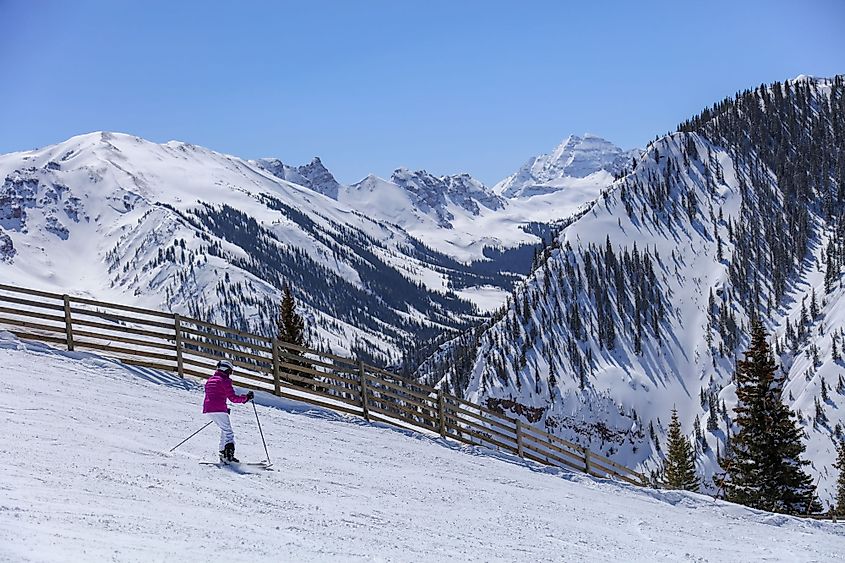
Colorado experienced a silver boom from the 1870s until 1893 after modern Americans discovered silver there. Aspen and many of the surrounding towns were established due to the silver boom. There's little question that silver miners and their families found the Maroon Bells during their stay in Aspen, but it wasn't until the 1950s that it became a popular tourist attraction. Aspen was a failing mining town in the early 1900s. Nevertheless, in 1950, Aspen Mountain was renovated as a ski resort and held the first American ski tournament, bringing the town global recognition. Pitkin County tourism started to take off, bringing people from all over the world.
Preservation At Maroon Bells
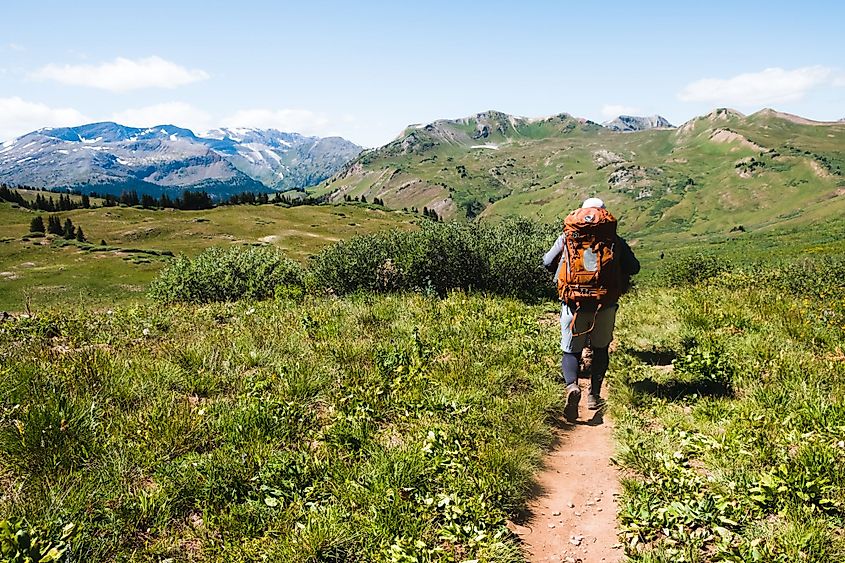
Due to the exceedingly high number of tourists that visit the Maroon Bells region, the USFS has developed a long-term plan to preserve the picturesque area and wider wilderness regions. Strategies include requiring backcountry campers to utilize bear canisters, managing day and overnight usage, educating and ticketing leashed dogs, reducing heavy horse use in high-use regions, and forbidding overnight camping and excess day use at certain locations. The US Forest Service recently suggested a paid permit concept to help with preservation efforts. The permit system was designed for people to stay overnight while minimizing environmental harm and conserving the heavily visited location. A permit is necessary all year and restricts campers to the Conundrum Creek Valley region from Silver Dollar Pond to Triangle Pass. Depending on the area, campground capacity ranges from 2 to 6 people. The USFS restricts the number of licenses to two per person per year, and the maximum stay is either three nights from June 1 to September 1 or seven nights from the rest of the year.
Hiking At Maroon Bells
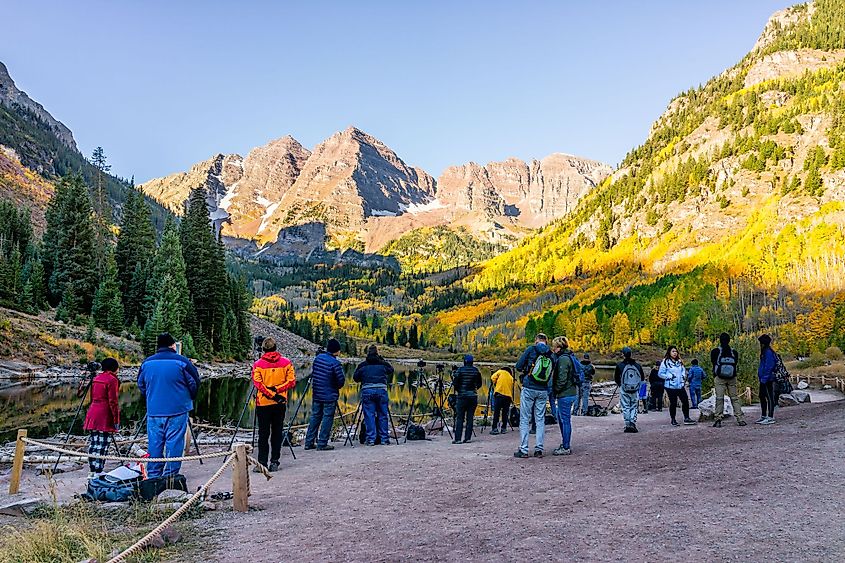
The area's unmatched beauty may best be appreciated while hiking, especially in July when the alpine meadows burst into bloom with an abundance of flowers and in late September when the Aspen trees turn an amber yellow. There are three different hiking trails at Maroon Bells: the Maroon Lake Scenic Trail is a 1-mile roundtrip hike that begins at the parking lot and around the lake. The 3.2-mile one-way Maroon Creek Trail is a great site to see wildlife such as mule deer, red fox, bighorn sheep, porcupines, and a species of birds. The final trail, the 3.6-mile roundtrip Crater Lake Trail, provides hikers with stunning views of Crater Lake and dense Aspen forests.
White River National Forest
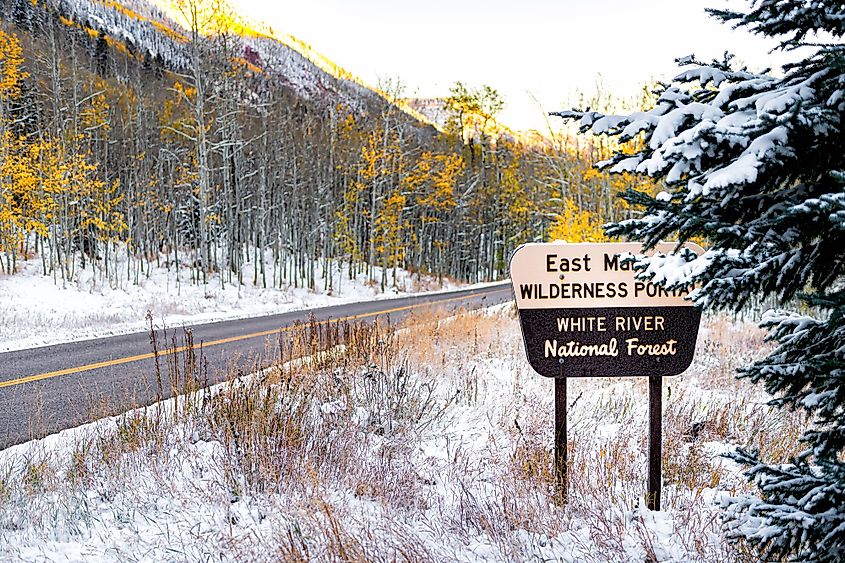
The White River National Forest is a well-known recreation region with eight wilderness areas that constitute over a third of its land area, 11 ski resorts, ten peaks above 14,000 feet, and famous attractions including Maroon Bells and Hanging Lake. Visitors may discover the traditional Colorado Rocky Mountains of the Gore, Tenmile, Sawatch, and Elk Ranges, as well as the uniquely unusual Flat Tops, by going through its five ranger districts.











